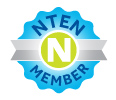Open-source for nonprofits is a broad field. NPOs can adopt existing open source software (OSS). They can influence open source projects. They can start open source projects.
NPOs often focus on open source that solves needs that are common across industries (Samba for file sharing, Linux for the operating system, etc.). They are just beginning to explore this first stage of adopting software and have little visibility into the potential for starting their own projects.
This is where the potential revolutionary impact of open source for nonprofits comes in. Most NPOs have very unique business processes, data collection, and evaluation needs. However, within nonprofit sectors, these needs can be defined generically. Every fundraising process starts with a donor, proceeds to an ask, and succeeds with a check. Every community technology center program starts with a participant, proceeds to an educational event (class, e-learning, etc.) and succeeds with the accomplishment of an educational objective.
Nonprofits are beginning to learn that automating these business processes leads to higher organizational impact at lower costs. So some folks are going out and building applications to automate these business processes.
Food banks are building applications that manage client intake, reporting to funders, nutrition services, kitchen operations and delivery operations. Most of the time, they end up building these applications in a closed source fashion with the expectation that maybe, “someday” they can sell the resulting application to other organizations. I have yet to see one successful example on this business model, but unsuccessful examples abound.
What if all the food banks pooled their pennies to collaborate on an open source food bank management application? And they have a lot of pennies… three major food banks could easily scrap up $100k apiece for such a project, if they understood the potential.
The only change to their current behavior would be to insist contractors work on the projects using open source software development strategies and that the code be released under an open source license (preferably GPL).
The benefits would be:
Higher levels of functionality at a lower cost than any single organization could achieve.
Organizations without the resources to build their own applications have access to industry best practices embedded into the open source applications.
Applications are updated and extended more regularly because rather than starting from scratch every 15 years with a new application at a high cost, an organization could update their internal application from the open source project every five years at a lower cost.
And many more.
BIO
David Geilhufe has worked in community technology since 1995 when he began teaching Washington DC at-risk youth Internet and programming skills and placing them in full time employment. He latter founded the Eastmont Computing Center, a community technology center serving individuals and organizations in Oakland, CA. As a founding board member of the Community Technology Centers’ Network (CTCNet) he worked to ensure affiliates received useful and direct services from the national office. Currently, David runs Social Source Software, LLC which specifies, designs, and builds complex open-source web applications for nonprofit organizations in the U.S. and abroad.
Saturday, April 13, 2002
Large Scale System Development in Open Source
Subscribe to:
Posts (Atom)

